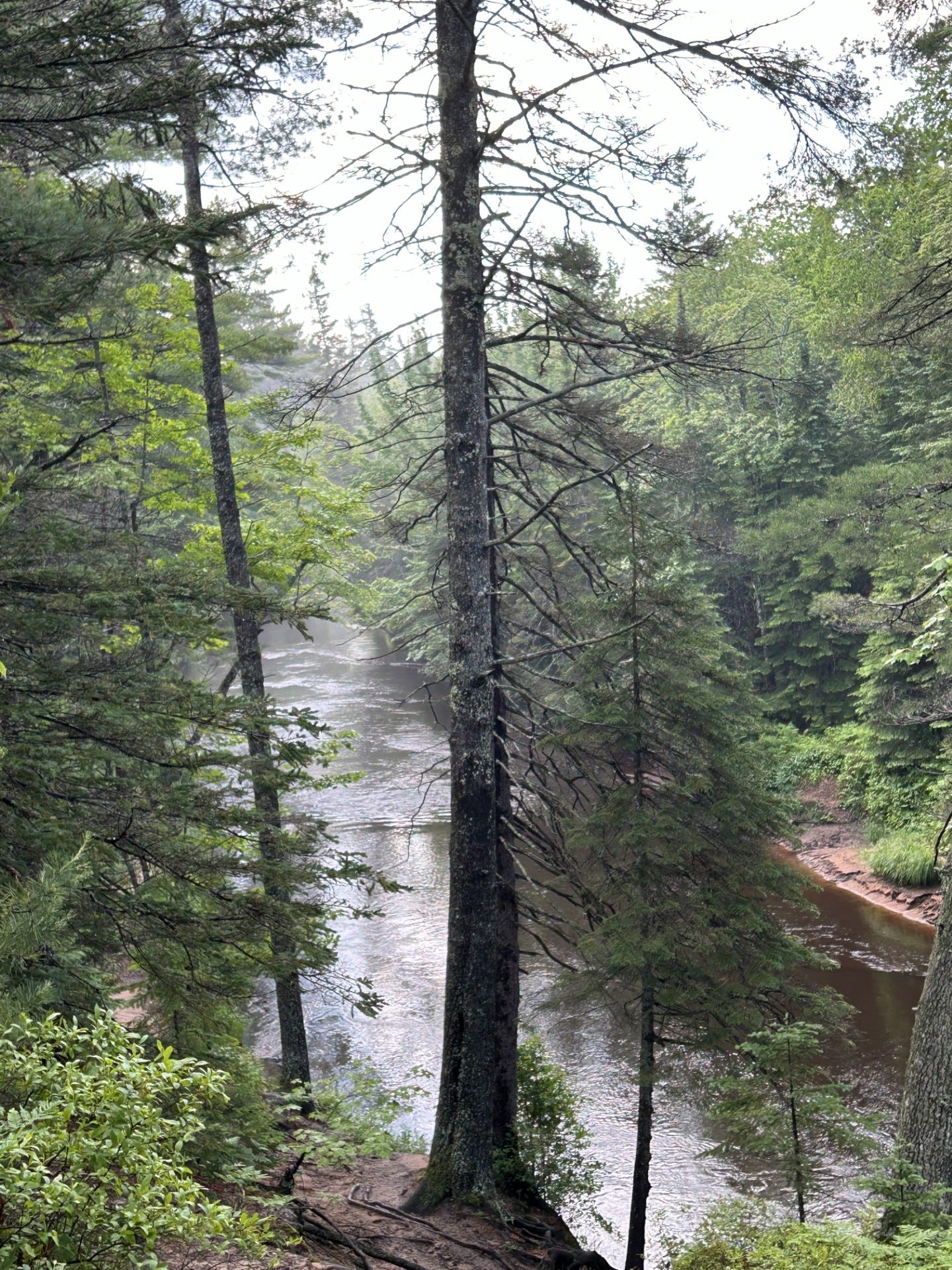The Real Two-Hearted River
100 years after Hemingway's short story, misunderstanding and magic persist
My high school English teacher once said a little dismissively, “Everyone goes through a Hemingway phase.” She was a big fan neither of Ernest Hemingway’s macho bluster nor of his revolutionary — and easily satirized — writing style. She thought Hemingway’s work was best enjoyed by adolescent males. At the time, I was an adolescent male and was crestfallen at her faint praise for the author.
Hemingway is on my mind now because it is the centennial year of perhaps his greatest short story, “Big Two-Hearted River,” and because I spent a day beside Michigan’s Two-Hearted River last week. But the story’s river and the real-life river are different watercourses, the source of a misunderstanding that continues to this day. Hemingway was writing about the nearby Fox River, but liked the Two-Hearted name and appropriated it for his story.
I can report after last week’s visit that the real Two-Hearted River is worthy of its own literature. Clean and cool, it flows largely unvexed to Lake Superior in a little developed watershed. (In fact, the real Two-Hearted River is about to get a book of its own. More on that soon.)
The real Two-Hearted.
The genesis of Hemingway’s story is his state of mind and soul upon his return from the European front during World War I. He sustained serious wounds as an ambulance driver and recuperated for months in hospitals. Like many war veterans, he found his psychic wounds took longer to heal; they may never have done so.
In “Big Two-Hearted River,” after returning from war a hollowed-out man, Nick Adams, Hemingway’s alter ego, travels by train to Seney in the eastern Upper Peninsula, disembarks, and tramps through country recently ravaged by fire—not unlike the ruins of a battlefield. The close-up, small details of nature—a stream swirling with trout, a kingfisher, a grasshopper—capture his attention. As the hours pass, his spirit gradually renews. Detached from human company, Nick finds a growing contentment in a simple camp and hours of fishing. Hemingway’s descriptive detail and rhythmic cadence render Nick’s experience as if it was the reader’s own.
The story was hailed as something utterly new and its influence lingers. “A century on, Big Two-Hearted River has helped shape language and literature in America and around the world,” says John Maclean. Which is why there are numerous centennial editions of the story in 2024.
If there is any doubt of the influence of northern Michigan landscapes in forming Hemingway’s writing aesthetic, this deleted passage from “Big Two-Hearted River” dispels it:
He wanted to write about country so it would be there like Cezanne had done it in painting. You had to do it from inside yourself . . . He felt almost holy about it. It was deadly serious. You could do it if you would fight it out. If you’d lived right with your eyes. It was a thing you couldn’t talk about . . . He knew just how Cezanne would paint this stretch of river.
In a 1919 letter to a friend, Hemingway described his attachment to northern Michigan in words Nick Adams might have used. “It is great northern air. Absolutely the best trout fishing in the country. No exaggeration. Fine country. Good color, good northern atmosphere, absolute freedom, no summer resort stuff and lots of paintable stuff…It’s a great place to laze around and swim and fish when you want to. And the best place in the world to do nothing. It is beautiful country Jim.”
As transformed as northern Michigan and the world are 100 years later, it’s stunning that much of the beauty of the Two-Hearted and environs maintains its majesty. That didn’t just happen; it took a lot of work by many people. But that, too, is a story for another time.



Nicely written and interesting reflections. In today’s world, more of us need to spend time outdoors, shedding for a while the sense of urgency that seems to seep into every aspect of life and doing nothing, as Hemingway notes. There’s a certain Zen to being out beyond wi-fi and cell phone coverage!
I was around 21 when I came under the Hemingway spell. So, I guess I fit the teacher's description. As a beginning writer, it was hard not to mimic his style and even subject matter--for me mainly the hunting and fishing along with descriptions of the northern Michigan countryside. Then as now, I still prefer his short stories, although The Sun Also Rises and A Farewell to Arts are outstanding. Big Two-Hearted was great and I liked most of the Nick Adams stories, but I think the Snows of Kilimanjaro is among the finest short stories ever done.